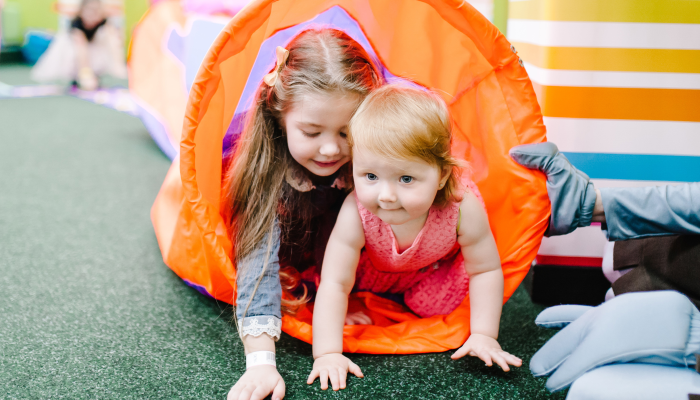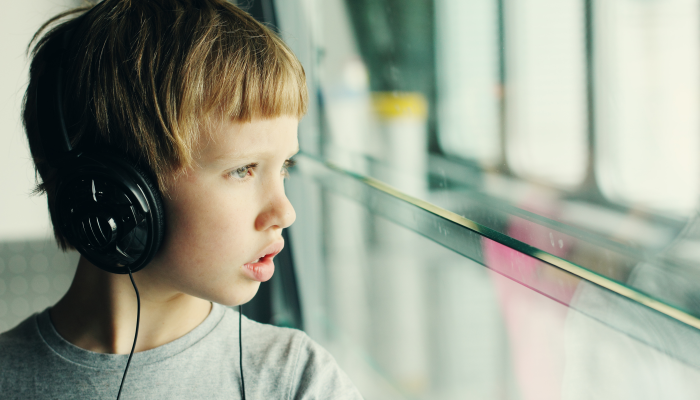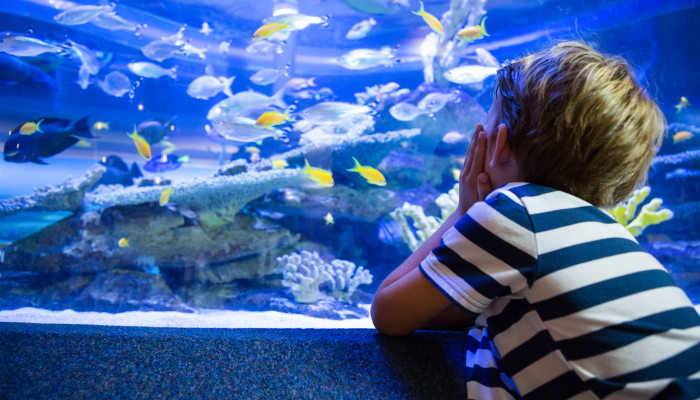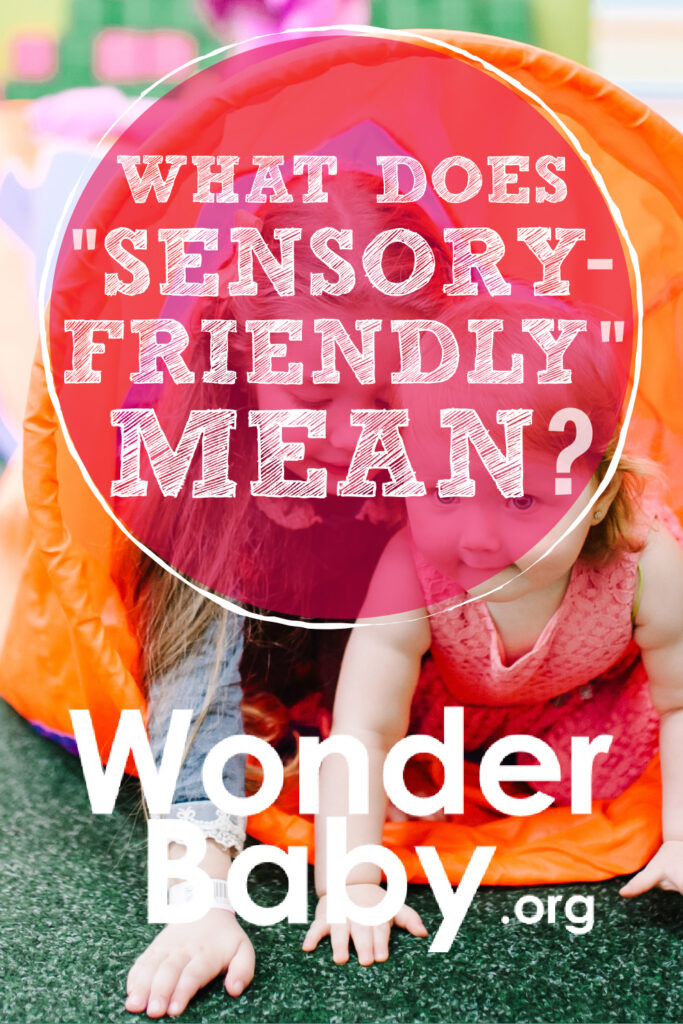What Does “Sensory-Friendly” Mean?

- Some children are more sensitive to sounds, tastes, smells, textures, and sensations than others.
- Highly sensitive children may need sensory-friendly toys and activities to help them feel safe and comfortable.
- Sensory-friendly experiences typically avoid bright lights, crowded spaces, and loud noises.
- Parents should make thoughtful choices about the toys they bring home or activities they involve their children in to help them avoid sensory overload.
For children with sensory processing difficulties, loud noises, bright lights, and flashing colors may cause stress and discomfort. Certain textures, noises, and smells may even cause sensory overload for different children. If your child has some of these sensitivities, helping them manage their emotions and anxieties can be a challenge.
Parents of children with sensory processing disorder are often told to choose sensory-friendly toys and activities. Theaters, museums, and children’s centers have started scheduling sensory-friendly events or activities for children with special needs. As a parent of a highly sensitive child, you may wonder, exactly what does sensory-friendly mean?
Defining “Sensory-Friendly”

Sensory-friendly environments are designed to help children who are easily overstimulated. Children who struggle to deal with sudden noises, flashing lights, heavily scented items, or large crowds may do better in a sensory-friendly environment.
Experts at Sensory Friendly Solutions11. Seeberger, C.. You Have Eight Senses Not Five. Sensory Friendly Solutions. 2020. https://www.sensoryfriendly.net/you-have-eight-senses-not-five explain that there are eight different sensory sensitivities that people may experience. These include:
- Sight
- Hearing
- Taste
- Touch
- Smell
- Movement
- Balance
- Interoception
Sensory-friendly solutions for each of these sensitivities may include:
| Sensory Experience | Sensory Friendly Solutions |
| Sight | Dim house lights in theaters, avoid flashing lights or colors, offer sunglasses |
| Hearing | Reduce background noise, offer noise-reducing headphones, turn down speaker volume, offer quiet zones |
| Taste | Offer plain food choices, allow children to make special requests, release the menu ahead of time for community events, use divided plates so different foods do not touch, allow families to bring in their own food |
| Touch | Have different seating options available, offer sitting areas away from crowds, hand out pins that let others know if someone does not want to be touched |
| Smell | Avoid strong odors, eliminate the use of air fresheners |
| Movement | Offer seating areas or special events where children will be allowed to move freely, hand out fidget toys |
| Balance | Provide motion sickness wristbands and stationary play areas |
| Interoception | Provide food, drinks, and blankets for children who are sensitive to thirst, hunger, or temperature, be sure the restroom is easy to find |
Children with a sensory sensitivity have brains that work differently than those without a sensory sensitivity. Patience, understanding, and offering accommodations can help these children feel accepted as they go about their daily life.
3 Key Points to Understand About Sensory-Friendly Design
As sensory-friendly spaces and events become more mainstream, it’s important to keep these important points in mind:

1. Inclusivity and Accessibility
Many museums, theaters, and children’s play areas are embracing the idea of inclusivity and adaptability in their organizations. Many movie theaters offer special showings for anyone with a sensory sensitivity to attend, play areas are creating safe spaces for children who experience sensory overload, and museums may have quiet hours that are held specifically for people sensitive to loud noises.
While autism is the most common cause of severe sensory sensitivity, research shows that up to 1 in 6 children in the United States22. Crasta, J. E., Salzinger, E., Lin, M.-H., Gavin, W. J., & Davies, P. L.. Sensory Processing and Attention Profiles Among Children With Sensory Processing Disorders and Autism Spectrum Disorders. Frontiers in Integrative Neuroscience. 2020;14. https://doi.org/10.3389/fnint.2020.00022 has some kind of sensory sensitivity.
2. Sensory Friendliness for All Ages
Some people have a misconception that only children benefit from sensory-friendly environments. While senses like vision and smell do decrease with age, experts at Heliyon Journal33. Ueno, Y., Takahashi, A., & Oshio, A.. Relationship between sensory-processing sensitivity and age in a large cross-sectional Japanese sample. Heliyon. 2019;5(10). https://doi.org/10.1016/j.heliyon.2019.e02508 explain that neurodivergent adults still benefit from participating in sensory-friendly experiences.
Leaders can make community centers and adult workplaces more comfortable for neurodivergent adults by eliminating background music, reducing the use of air fresheners, dimming bright lights, or offering designated quiet areas.
People should avoid making assumptions about who may or may not have a sensory sensitivity. Adults may feel pressured to eat foods or try new things that make them uncomfortable due to peer pressure. While some people do grow out of certain sensitivities, others do not.
3. The Importance of Community Awareness and Education
When community members have a greater awareness, they can help children and families who struggle with sensory overload. Community theaters or event centers are often able to host a sensory-friendly event at specific times or create a quiet zone for kids to take a break from noise or bright lights.
Parents of children with autism or other special needs shouldn’t be afraid to speak up and ask for reasonable accommodations for their children. These children may need a sensory-friendly haircut, special clothing, protective eyewear, or to attend only sensory-friendly events.
FAQs

What challenges do families face in finding sensory-friendly products?
Families of children with autism and other special needs may face several challenges when looking for sensory-friendly events and products. One of the most difficult challenges to overcome is that each child has different preferences and sensitivities. Finding a product or activity that aligns with all of a child’s needs can be difficult.
Parents often have to make special requests or bring special items to events, even when those events are sensory-friendly. Children with extreme sensory sensitivities may need eye protection, weighted blankets, noise-canceling headphones, and special foods.
What role does technology play in creating sensory-friendly environments?
Technology can allow public spaces to accommodate children with sensory sensitivities. Most movies and theater productions can be edited or adjusted to eliminate flashing lights and loud noises, and technology like noise-reducing headphones or special glasses can help children be more comfortable in different environments.
References
- Seeberger, C. (2020, March 23). You Have Eight Senses Not Five. Sensory Friendly Solutions. https://www.sensoryfriendly.net/you-have-eight-senses-not-five
- Crasta, J. E., Salzinger, E., Lin, M.-H., Gavin, W. J., & Davies, P. L. (2020). Sensory Processing and Attention Profiles Among Children With Sensory Processing Disorders and Autism Spectrum Disorders. Frontiers in Integrative Neuroscience, 14. https://doi.org/10.3389/fnint.2020.00022
- Ueno, Y., Takahashi, A., & Oshio, A. (2019). Relationship between sensory-processing sensitivity and age in a large cross-sectional Japanese sample. Heliyon, 5(10). https://doi.org/10.1016/j.heliyon.2019.e02508

The information WonderBaby provides is not intended to be, and does not constitute, medical or other health advice or diagnosis and should not be used as such. Always consult with a qualified medical professional about your specific circumstances.
Related Posts

Eye Conditions and Syndromes, Visual Impairment
Neuralink Announces Plans to Restore Sight to the Blind with Brain Chip
Elon Musk’s company Neuralink has announced plans to begin human trials of its new “Blindsight” brain chip by the end of 2025.

Special Needs
5 Spring Cleaning Tips for Families of Children with Disabilities
Spring cleaning is an opportunity to create a more accessible, organized, and supportive space for your child with disabilities. Declutter, deep clean, and refresh!

Visual Impairment
The Gift of Understanding: How a Young Child Helps His Blind Father Navigate Life
When a parent is blind, it’s natural for people to wonder how their sighted child will adapt. Will they struggle to understand their parent’s needs? Will they feel burdened by...